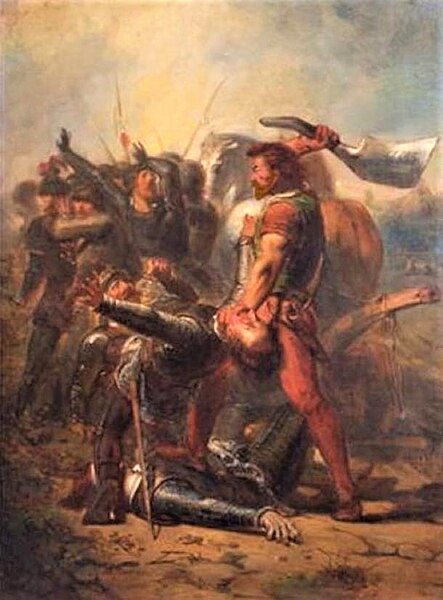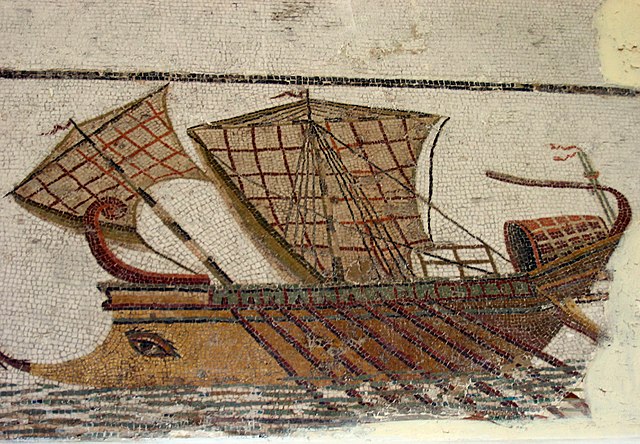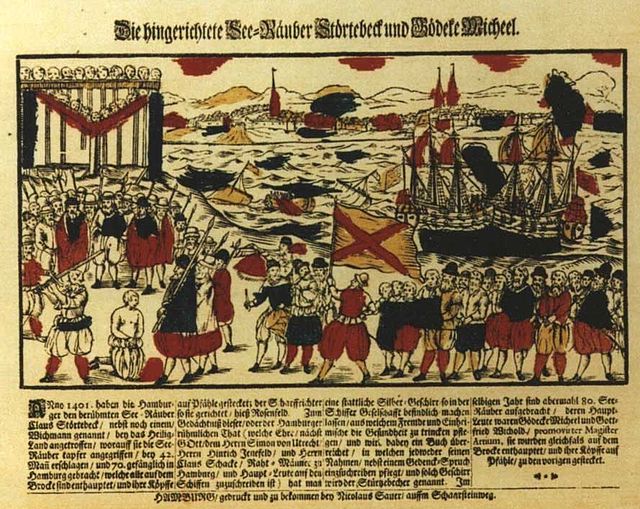Pier Gerlofs Donia was a Frisian farmer, rebel leader, and pirate. He is best known by his West Frisian nickname Grutte Pier, or by the Dutch translation Grote Pier, which referred to his legendary size, strength, and bravery.
Etching of Grutte Pier, from Chronycke ofte Historische Geschiedenis van Frieslant, published in 1622.
"De dapperheid van Grote Pier" (The bravery of Grote Pier), anno 1516, Oil on canvas by Johannes Hinderikus Egenberger, (Arnhem 1822 – Utrecht 1897)
Statue of Grutte Pier in his hometown of Kimswerd. The line of text on the foot of the statue reads in Frisian "Grutte Pier".
Piracy is an act of robbery or criminal violence by ship or boat-borne attackers upon another ship or a coastal area, typically with the goal of stealing cargo and other valuable goods. Those who conduct acts of piracy are called pirates, and vessels used for piracy are called pirate ships. The earliest documented instances of piracy were in the 14th century BC, when the Sea Peoples, a group of ocean raiders, attacked the ships of the Aegean and Mediterranean civilisations. Narrow channels which funnel shipping into predictable routes have long created opportunities for piracy, as well as for privateering and commerce raiding.
A mosaic of a Roman trireme in Tunisia
A fleet of Vikings, painted mid-12th century
The Vitalienbrüder. Piracy became endemic in the Baltic sea in the Middle Ages because of the Victual Brothers.
"Cossacks of Azov fighting a Turk ship" by Grigory Gagarin







